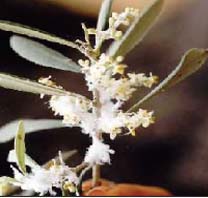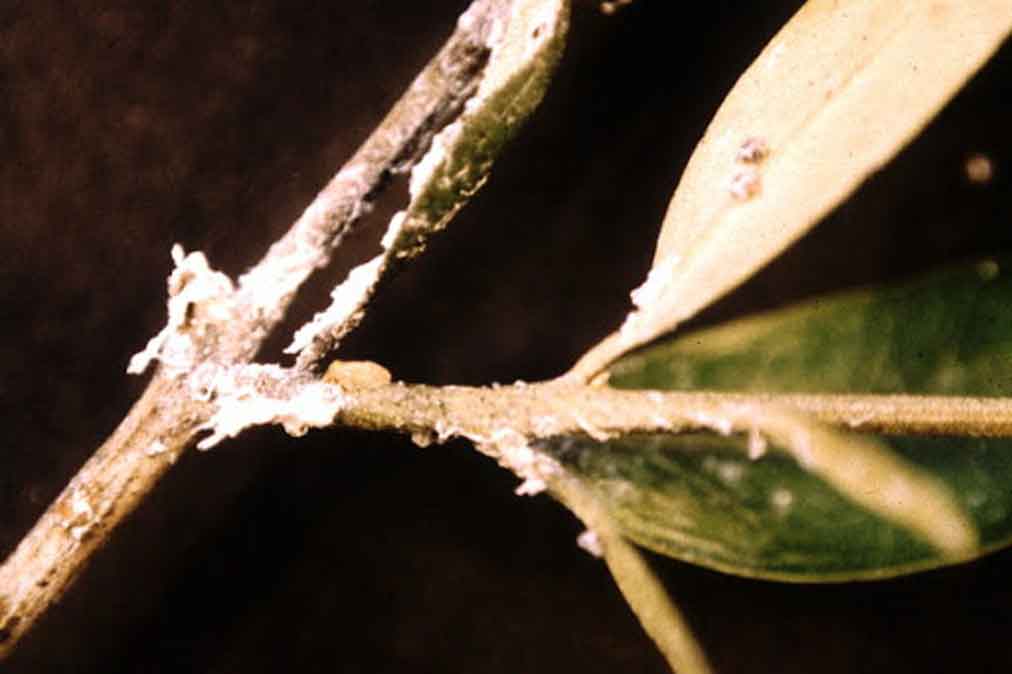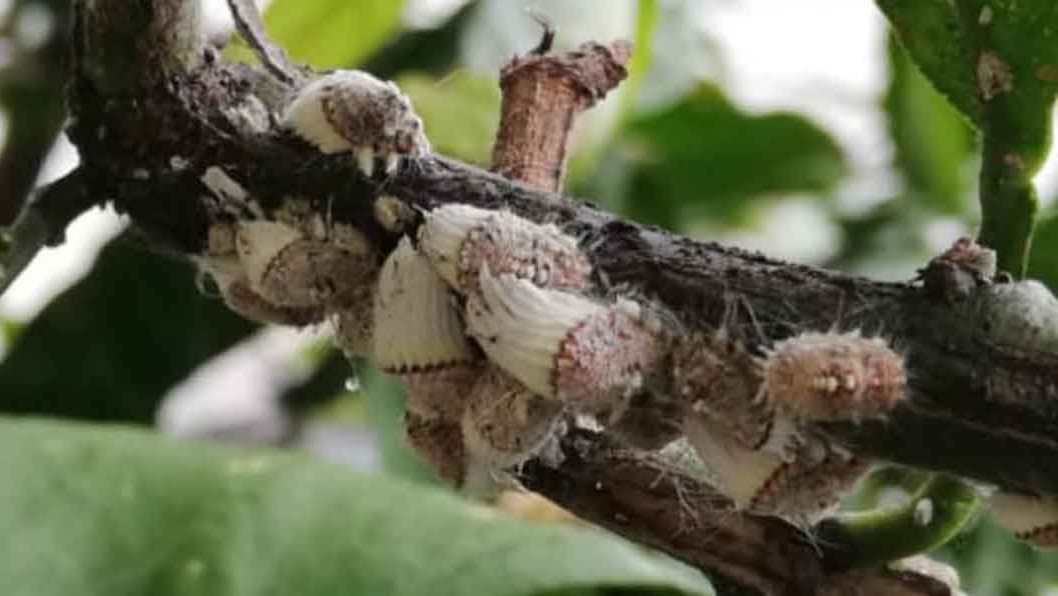|
|
| Euphyllura Spp |
| Olive Psyllid, Euphyllura olivine or Euphyllura spp.: The Olive Psyllid has been found in San Diego and Orange Counties on ornamental olive trees in the landscape. This is the first detection of this species in the US. Its commonly found in Europe through the Mediterranean and into Iran. |
| Adults are small, about 2.5 mm long, bulky in profile and robust. They jump rapidly before flying, and have strong wings. Adults are greenish to pale colored, with light brownish shadows on the fore wings. Euphyllura Spp eggs are very small, 0.3 mm long, and pale yellowish in color. |
|
 |
| There are five nymphal instars varying from 0.4 mm long in the first to 1.5 mm in the final instar. The first nymphal instar has no visible traces of wings, while the last two instars have clearly visible wing buds (see illustration above). In all instars the body is covered with whitish waxy secreted by the insect. |
 |
Euphyllura Spp adults pass the winter period in crevices or holes on olive trunks, resuming activity and mating as soon as spring begins. Females frequently lay one or more eggs on the new shoots. Each female can lay more than 1,000 eggs. Adults can live 2 to 3 months. Eggs hatch after an incubation period of 8 to12 days. Euphyllura Spp nymphs feed by rupturing cells and imbibing the sap, thereby damaging the attacked tissue and at the same time excreting honeydew upon which sooty molds develop. Nymphal development can take 24 to 35 days. |
| The first generation occurs during March-April while the second generation in May to June on inflorescences and flower buds. Euphyllura Spp this second generation aestivates in summer when temperatures exceed 80°F. As soon as the weather becomes more favorable, usually after the first September rains, the adults restart their activity and give rise to the third generation. The hibernating adults will result from this last generation. |
| Euphyllura Spp the second generation, being associated with the new flowering and fruiting olive branches, is the most harmful not only because the direct feeding activity affects yield but also because indirect action by producing waxy secretions induces many of the flowers to abort, even those not attacked directly (Fig. 2). The presence of honey-dew and sooty molds aggravate the latter situation. |
 |
| Control measures during the second generation are less efficient because of the waxy coating over the insects. Therefore, it is preferable to reduce E. olivina populations during the first generation rather than later in the season. |
|
|
|

